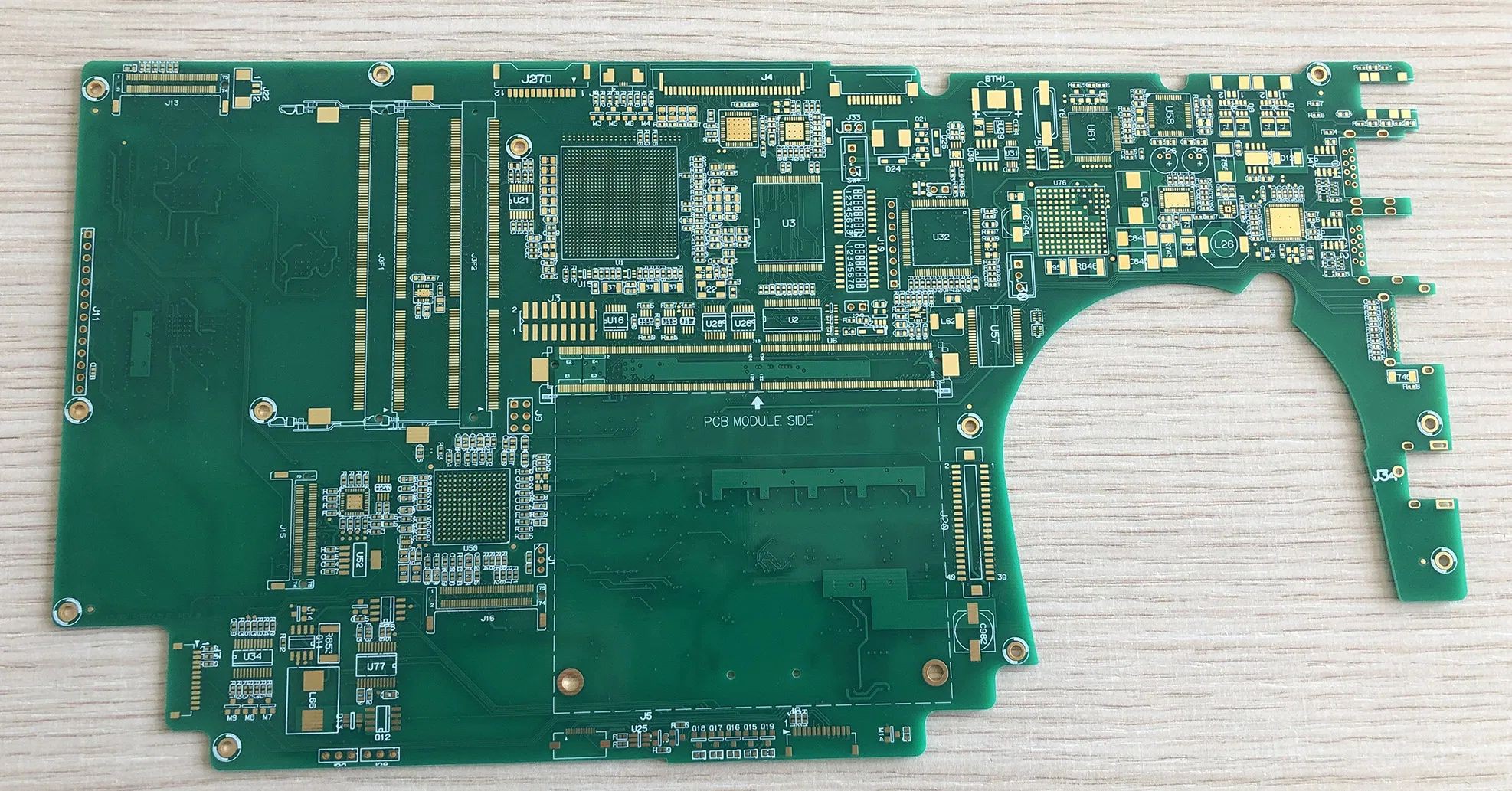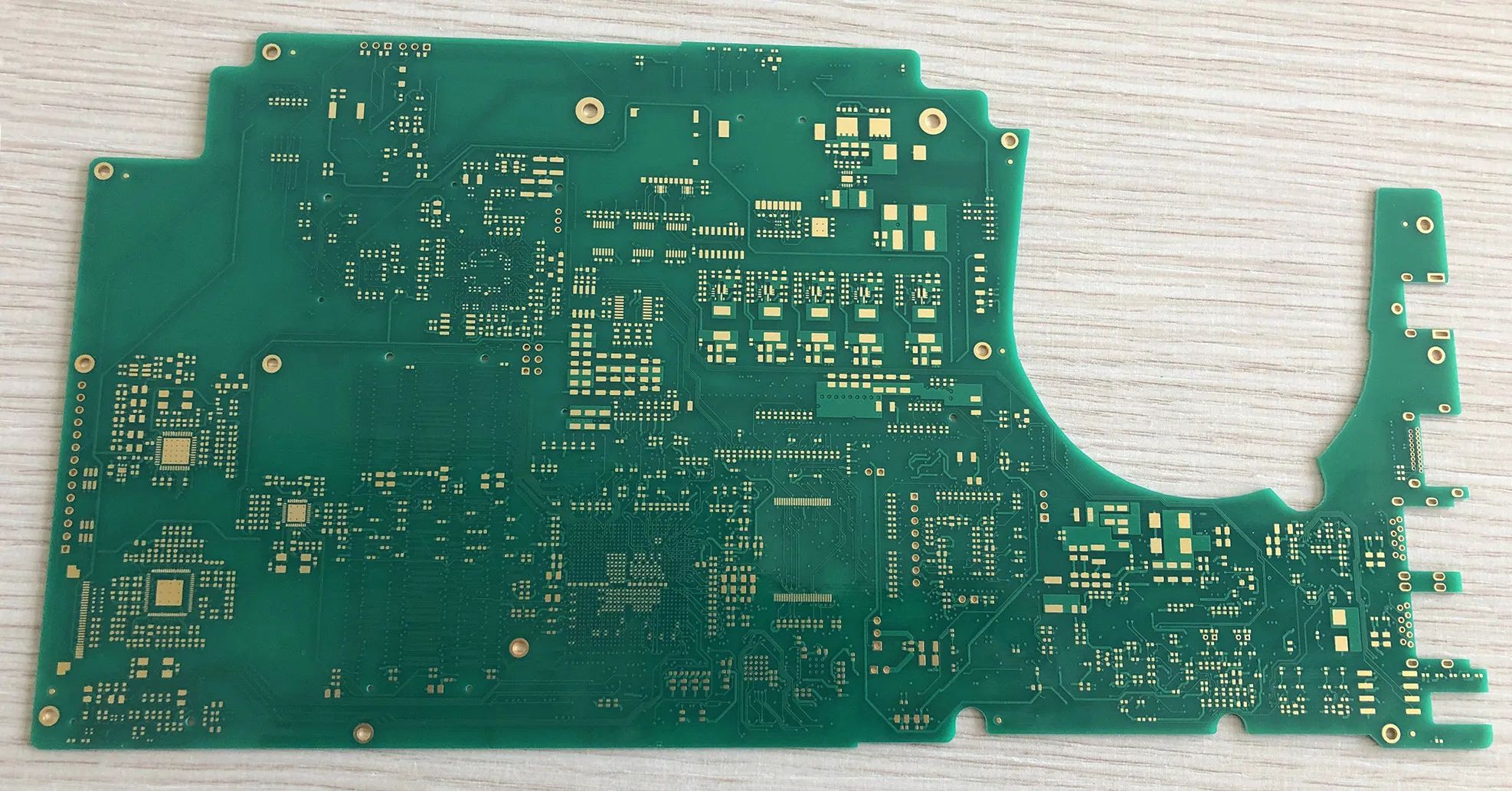It is with great joy that we present you the first tangible result after years of spending time on planning, ideas, projects and schematics. Below you see pictures of the dummy board, a non-working prototype that was printed with a two-layers PCB that was paid thanks to the ongoing donation campaign.


The primary use of this dummy board is to perform mechanical checks in conjunction with the Slimbook notebook chassis. The board is not finished yet, the PCB designer still has to mount additional mechanical components such as connectors to ensure the final working prototypes will fit perfectly in the Slimbook Eclipse chassis.
The PCB designer in charge of the job is carefully working to fine tune the gerber design files and already adjusted some minor details, proving that a preliminary dummy board was very much needed.
We would like to thank Gerard Schneider that kindly offered us a ATI Radeon 7970 MXM card, it will surely help us testing the working prototypes that will be produced later on. We welcome anybody else willing to send us other Radeon MXM cards that may lay unused in a corner, we would like to start as soon as possible to test various GPUs in the upcoming working hardware.
[UPDATE 2021-04-22] Unfortunately our notebook board is set to work exclusively with MXM-A 3.0 (type A) with a size of 82mm x 70 mm and with a maximum power consumption of 55W, whereas the MXM card provided by that Gerard Schneider is an MXM-B (type B) with a size of 82mm x 105mm and a maximum power of 200W. Thank you anyway Gerard, your card will be useful to check and eventually fix the video drivers but it will not be used inside the prototypes.
Even if it is “just” a dummy board, this is a great milestone, and we are really happy about it because we can finally touch something with our hands. We would like to thank all the people that made it possible to reach this point, and we really hope that the donation campaign financing the final prototypes will speed up because now we all want to see more!!
Are you willing to help?
Being part of a project like this could be an amazing experience, you meet new people, volunteers of other projects, companies devoted to open source and everyone is willing to help. We are continuously giving examples of this in our blog posts but, in the last weeks, we are especially grateful about the support received from KiCad developers and Slimbook.
Two additional enclosures for our prototypes.
Slimbook is a company making a huge effort in promoting an Open Source environment. They produce notebooks, mini-PCs and desktop computers targeting mainly Linux users. As an example of their commitment to the open source community, they have a very have a good relationship with the KDE project and together they collaborate on the creation of laptops meant to use primarily KDE. Despite being a small company, they are having success selling their products worldwide and these are very appreciated by the Linux community. As you may know, we started our collaboration with Slimbook more than two years ago and they have been always quite helpful promptly responding to our requests and providing information about the enclosure design or the related components that will be also used in our notebook (screen, keyboard, dissipation devices, etc.). All their support and time was kindly offered for free. Besides that support, we have received two Slimbook Eclipse enclosures to continue our tests. This will make possible to assemble three prototypes of our PPC Notebook. Again, they did it for free. We have no words.
Export our PCB to KiCad, a difficult journey
At the very beginning of this adventure, we were trying to find hardware experts to design the motherboard but the level of expertise required for such type of hardware made this challenge unachievable for us. Of course, we have experts on that field but the complexity of this design demands quite a lot of time, impossible to carry out solely using the volunteers spare time. So we opted to look for a company experienced in motherboard design and even more difficult, a company that was experienced with the PowerPC architecture.
We were lucky enough to meet ACube Systems and its circle of collaborators. However, as most for-profit companies do, the ACube System subcontractor company had its own proprietary software tools which generates file encoded using non-open outputs formats. In our case we end up with files created using Mentor Xpedition, a software that cannot exporting to KiCad. To convert our Mentor Xpedition source files we were told to import them into Altium, and import the converted Altium files into KiCad.
Unfortunately, the KiCad importer for Altium files is still heavily under development, and it is far from being complete. We contacted the KiCad developers and they kindly accepted to perform some testing with our Altium PCB files and that helped spotting various errors in the conversion procedure. These error were identified by the developer in charge of the Altium import module for KiCad and he is currently addressing the encountered issues. Regarding the BOM (Bill Of Materials) the guys at KiCad recommended to import the Altium schematics to KiCad, and generate the BOM from there.
Obtaining an open source format for publishing our motherboard PCB is very important for us, as it allow anyone to easily access the result of our efforts to deliver a truly and fully compliant Open Hardware design.
After a few attempts, the guys at KiCad suggested another option: instead of converting the original Mentor Xpedition files to Altium, they suggested to load them using FabMaster. In fact, KiCad has another importer dedicated to FabMaster (for the board only) and the result of this import module should be useful to understand the level of accuracy of the Altium importer. In theory, the Altium import should produce better results with respects to the FabMaster importer as it is a newer. We are currently investigating if we can follow this path, as it seems to require a full Xpedition license, therefore we are in the process of contacting the subcontractor engineer to explore this solution.
An AmigaOS4 AHI driver for our sound chipset
Our notebook motherboard is open to any operating system supporting PowerPC. Among the operating system that could possibly work, there is AmigaOS 4, a closed-source system that already works on the E-AON AmigaOne X5000 that mount either a NXP P5020 or a P5040, which are both PowerPC Book3e e5500 CPUs. These CPUs can be considered the previous generation CPUs with respect to our T2080 (PowerPC Book3e e6500), one of the main differences is that they lack the Altivec unit, which the T2080 has.
On the April 1st the Dutch developer H. Kanning (nickname “geen_naam”) announced the availability of an AHI sound driver supporting HD Audio compliant chips, and explicitly supporting the C-MEDIA C8828 that we selected for our motherboard. At first we though it was an April fool, but then it was confirmed to actually exists and work, meaning that another operating system is one step closer to being supported. Great job!
 Roberto Innocenti
Roberto Innocenti
Discussions
Become a Hackaday.io Member
Create an account to leave a comment. Already have an account? Log In.